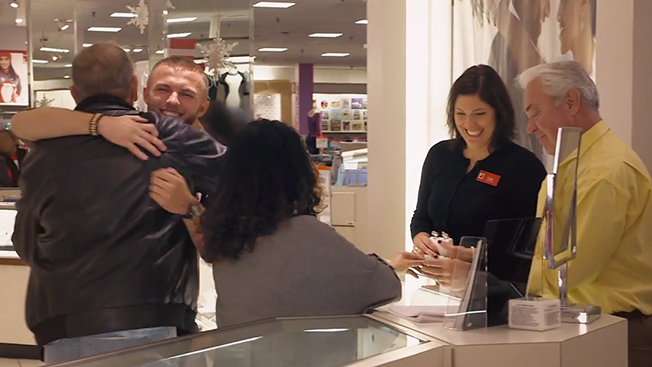JCPenney says Twitter was behind its most successful social program—not Facebook or YouTube—and credited the platform's new video creation and viewing capabilities. The retailer only paid 4 cents for every view, an astoundingly low sum for digital video ads.
Ad industry insiders familiar with social media rates said video ads elsewhere cost up to $1 a view.
"Some brands are seeing 2 cents per view on Twitter, which is very effective," said one ad industry exec not authorized to speak about rates on the record.
JCPenney's holiday campaign "Just Got Jingled" featured videos of customers receiving surprise gifts from strangers in stores. Needless to say, the Internet is fond of such random acts of kindness, even when they are part of a branded marketing stunt.
The retailer caught the results on camera and promoted them on Twitter, which recently developed in-app, native video tools. Twitter CEO Dick Costolo has made video capabilities for brands, celebrities, media and everyday users a priority, which is why the company bought SnappyTV last year and Niche last week. The former is a technology that powers Twitter's in-house video, and the latter manages Web celebrities to help them make money by selling ads against their videos.
Twitter is up against a formidable group of video players—YouTube, Facebook, Snapchat, Yahoo, Tumblr and more. JCPenney went with Twitter to power its digital push but still posted its videos elsewhere, too.
"Natively placing the video on Twitter offered a seamless way for consumers to view and share the content. That ease of use helped make Twitter the top platform for views," Sean Ryan, director of social media at JCPenney, wrote in a report about the campaign. "While we could have promoted a link to the video on YouTube, the native placement was much more effective in cost per view."
It used to be if a brand had a video, YouTube was among its only vehicles, but now there are many. "Rather than two or three years ago when YouTube was the place to host a video, marketers now need to think across the board when its comes to promoting video, and that definitely includes Twitter," Ryan said.
In its JCPenney report, Twitter revealed a rare peek at how one of its first Promoted Video ad campaigns performed. Here's how it worked:
- JCPenney let strangers pick fellow shoppers in stores and paid for their items at checkout.
- The retailer promoted the videos on Twitter and targeted them based on users' shopping profiles and interest in holiday deals.
- The retailer sent promoted tweets to Twitter users discussing the holidays, and adjusted messaging on the fly.
- The video generated more than 3 million views on the social media site (more than on YouTube), according to JCPenney. At 4 cents a view, the campaign would add up to about $120,000.
- Nine out of 10 impressions were unpaid, organic tweets viewed by users without the promoted tag.
- There were 16 million impressions, in all, on the promoted tweet.








